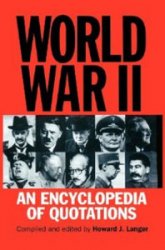The great Ruler of Heaven looked down,” wrote the Italian artist, architect, and
author Giorgio Vasari (1511–74), and seeing “the presumptuous opinion of man
“
more removed from truth than light from darkness, resolved … to send to earth a
genius universal in each art … so that the world should marvel at the singular eminence
of his life and works and all his actions, seeming rather divine than earthly.” 1 In
his Lives of the Most Eminent Painters, Sculptors, and Architects , a series of biographies
of artists published in 1550, Vasari coins a word to describe the new types of art made
by this singular genius – Michelangelo Buonarotti (1475–1564) – and other painters,
sculptors and architects only slightly less talented: Renaissance ( rinascita or “rebirth”
in Italian). Writers and thinkers of the fourteenth and early fi fteenth centuries such as
Petrarch (1304–74) and Lorenzo Valla (1405–47) had already seen themselves as reinvigorators
of the classical past, but Vasari thought that this rebirth had gone beyond
the original. “Many works today,” he wrote, “are more perfect and better fi nished than
were those of the great masters of the past.” 2 Their creators were, in Vasari’s eyes, not
simply skilled and highly trained artisans, but “rare men of genius,” who should sign
and take full credit for their work. This notion of the artist as creative genius did not
apply to all branches of art, but to those in Vasari’s title – painting, sculpture, and
architecture – which were subsequently dubbed the “major” arts. Other types of art,
such as needlework, porcelain manufacture, goldsmithing, and furniture-making, were
“minor arts,” “decorative arts,” or “crafts,” and the names of those who made them were
not important.
In addition to inventing the term “Renaissance,” Vasari also infl uenced how we understand
other aspects of art and culture. He is often regarded as the fi rst art historian,
and his categories continue to shape the way that art history is taught and museums
are arranged. Vasari’s term “Renaissance” came to be used for a whole era and not
simply its art. Because it derived from broad cultural changes and not specifi c events,
the Renaissance happened at different times in different parts of Europe. “Renaissance”
is used to describe fi fteenth-century Italian paintings, sixteenth-century English literature,
and seventeenth-century Scandinavian architecture. As we discussed in the
introduction to this book, some scholars see the Renaissance as the beginning of the
“modern” era, while others see it as a sort of transition between medieval and modern.
Others choose to limit the term only to art, and object to its being used more generally
because it is not a discrete period. Like “Europe,” however, “Renaissance” is a term that
is too widely used to avoid, even if there is disagreement about its limits.
Vasari’s distinction between “art” (made by “rare men of genius”) and “craft” (made by
everyone else) has been extended to other cultural realms in early modern Europe: certain
forms of writing, such as poetry, history, and epics, came to be defi ned as “literature,”
while other types of writing, such as letters and diaries, were excluded from this category;
certain forms of music became “classical,” while everything else was “popular” or “folk”;
instruction that occurred in institutional settings was “education,” while that going on
in the family or workshop was “training” or “tradition.” Scholars traced a growing split
between professional and amateur, and, to a lesser degree, between learned and popular
culture. High culture and advanced intellectual accomplishments were urban, supported
by wealthy elites, and done by individuals – predominantly men – who had been formally
trained or educated.
Research into all aspects of cultural life over the past several decades, however, has
pointed out that the divisions between art and craft, learned and popular, high and low,
are more pronounced in hindsight than they were at the time. Vasari may have prized
painting, sculpture, and architecture, but patrons carefully ordered and paid enormous
amounts for candlesticks, silver and gold tableware, enameled or jewel-encrusted dishes,
embroidered altarcloths, enormous tapestries, and portrait medallions, along with
paintings and statues. Embroiderers as well as painters experimented with perspective,
paid greater attention to proportion, shadowing, and naturalistic representation,
and took their subjects from antiquity. Writers paid as much, or even more, attention
to literary conventions in their letters than in their poetry or drama. Folk tales told
orally for centuries became part of literary works in many countries, and people telling
stories increasingly included those that someone had read in a book. Highly learned
individuals participated in festivities involving all kinds of people that poked fun at
their own intellectual pretensions and satirized other hierarchies of power and status.
Educated individuals did form a community among themselves with concerns different
from the vast majority of the population, but they also shared many values and
traditions with their less-educated neighbors.




 World History
World History









